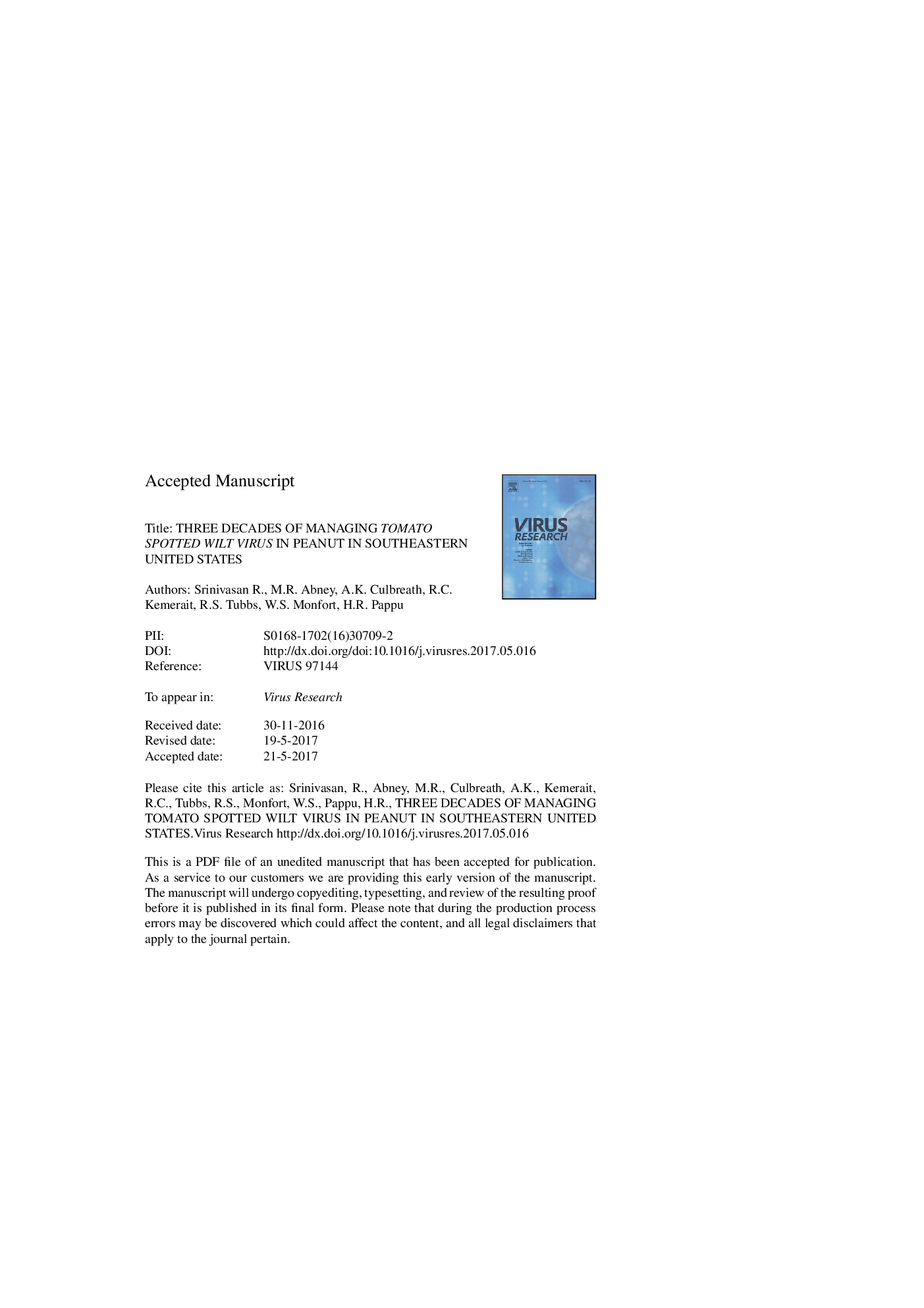| Article ID | Journal | Published Year | Pages | File Type |
|---|---|---|---|---|
| 8752125 | Virus Research | 2017 | 45 Pages |
Abstract
A Risk Mitigation Index (Peanut Rx) was made available to growers to assess risks, and provide options for mitigating risks such as planting field resistant cultivars with in-furrow insecticides, planting after peak thrips incidence, planting in twin rows, and increasing seeding rates. These efforts helped curtail losses due to spotted wilt. The Peanut Rx continues to be refined every year based on new research findings. Breeding efforts, predominantly in Georgia and Florida, continue to develop cultivars with incremental field resistance. The present-day cultivars (third-generation TSWV-resistant cultivars released after 2010) possess substantially greater field resistance than second-generation (cultivars released from 2000 to 2010) and first-generation (cultivars released from 1994 to 2000) TSWV resistant cultivars. Despite increased field resistance, these cultivars are not immune to TSWV and succumb under high thrips and TSWV pressure. Therefore, field resistant cultivars cannot serve as a 'stand-alone' option and have to be integrated with other management options. The mechanism of resistance is also unknown in field resistant cultivars. Recent research in our laboratory evaluated field resistant cultivars against thrips and TSWV. Results revealed that some resistant cultivars suppressed thrips feeding and development, and they accumulated fewer viral copies than susceptible cultivars. Transcriptomes developed with the aid of Next Generation Sequencing revealed differential gene expression patterns following TSWV infection in susceptible than field resistant cultivars. Results revealed that the upregulation of transcripts pertaining to constitutive and induced plant defense proteins in TSWV resistant cultivars was more robust over susceptible cultivars. On the flipside, the long-term effects of using such resistant cultivars on TSWV were assessed by virus population genetics studies. Initial results suggest lack of positive selection pressure on TSWV, and that the sustainable use of resistant cultivars is not threatened. Follow up research is being conducted. Improvements in TSWV management have enhanced sustainability and contributed to increased yields from <2800Â kg/ha before 1995 to â¼5000Â kg/ha in 2015.
Keywords
Related Topics
Life Sciences
Immunology and Microbiology
Virology
Authors
Srinivasan R., M.R. Abney, A.K. Culbreath, R.C. Kemerait, R.S. Tubbs, W.S. Monfort, H.R. Pappu,
